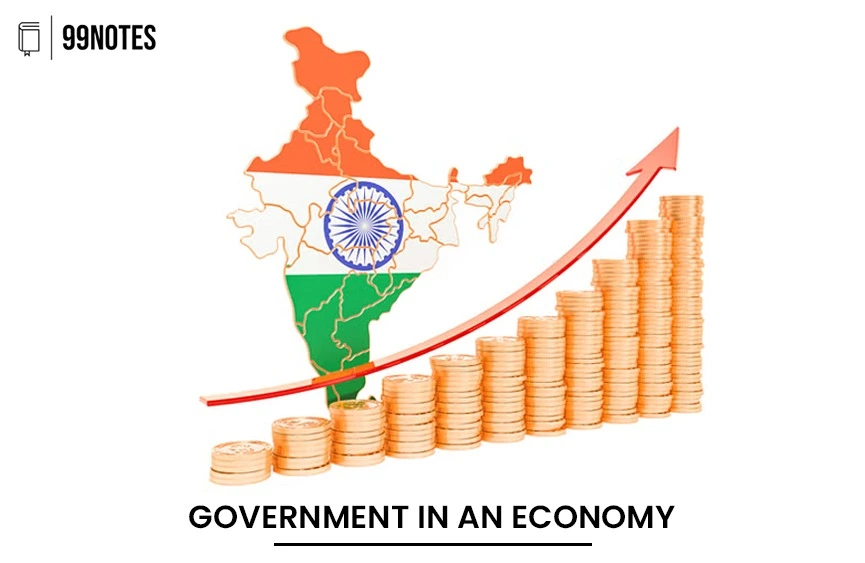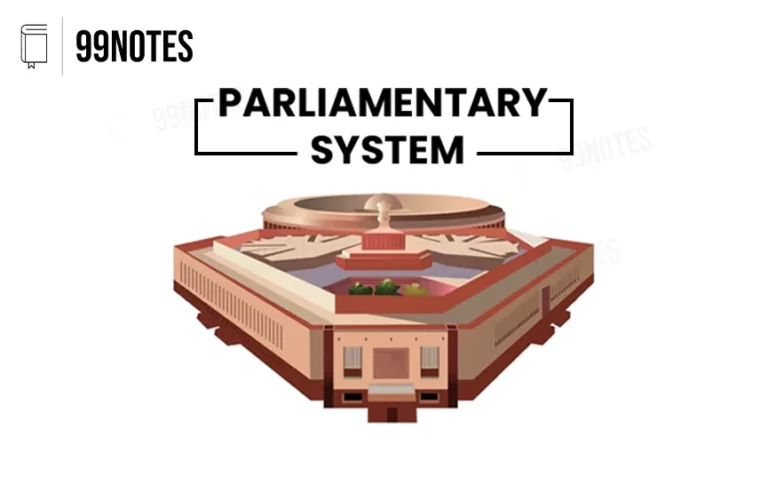Role of Government in an Economy
Functions of government
In any economy, the government performs various functions:
- Provide public goods: Those goods which the market cannot provide, the government steps in to provide. For example, security, rail network, public parks etc.
- Distribution function: Through its tax and expenditure policy, the government Attempts to bring about a distribution of income that is considered ‘fair’ by society. Government affects the personal income of households by making transfer payments and collecting taxes;
- Stabilisation: from fluctuations in unemployment or inflation;
|
Public v/s Private Goods |
Private goods: These are provided via the market mechanism. The benefit of such good is limited to one particular consumer. These goods follow two important characteristics:
Public goods: That can’t be provided through market mechanisms. These are Non-Rival Non-exclusive goods; i.e. by transactions between individual consumers and producers and must be provided by the government; For example, National defence, roads, and government administration. However, this creates a Free rider problem. It becomes difficult to collect fees for public goods, therefore it is often made free for all. Therefore, it creates two interesting situations:
|
|
Importance of Redistribution of Wealth |
| When wealth is redistributed through progressive taxation (a system in which the rich are taxed more than the poor), social programs, and direct transfers growth is promoted. How?
Lower-income groups spend a greater proportion of their income on consumption, and have higher disposable income, boosting consumption and demand, which drives economic growth. |
Components of Government budget
The government gets the money for its expenditures through two types of sources.
- One, for which no liability is created, for example, money collected through tax, fees and fines. The government is not liable to pay it back to someone.
- And second, for which liability is created, for example, money raised through debt. The government has to pay this money back to the people from whom it has borrowed.
The government cannot keep the receipts from both of these sources in one account. Mixing them could lead to mismanagement, fiscal instability, and inaccurate financial planning.
The government budget is therefore divided into revenue and capital budgets based on the nature of income and expenditure. The revenue budget includes tax and non-tax revenues used for day-to-day expenses, while the capital budget covers borrowings, investments, and asset creation, ensuring long-term economic growth and financial stability.
Logic of Separating Capital and Revenue Budget
We want the government to spend only that money on salaries and schemes which it does not need to pay back. The borrowed money should only be used to create such assets that can create some future income.
Revenue account:
Current receipts of the government and expenditures that can be met from that receipt.
Revenue receipts:
There is no liability on these receipts.
Tax Revenue:
The tax revenue consists of the proceeds of taxes and other duties levied by the central government. Tax revenues, an important component of revenue receipts, comprise:
- Direct taxes – When a tax is paid straight to the government without intermediaries, by those upon whom it is levied. It is known as Direct Tax. For example, income tax, corporate tax, and wealth tax. Every individual on whom the tax is levied has to pay it to the government directly.
- Indirect taxes – Taxes that are not paid directly to the government, but are paid through intermediaries are indirect taxes. For example, excise taxes and GST. You don’t pay GST directly to the government. It is levied on you and is collected by the business owner who is responsible for submitting this to the government.
The indirect tax is levied on the consumption.
We shall cover these topics in greater detail in the next chapters.
|
Progressive Taxation |
| Progressive taxation is a tax system where higher-income individuals pay a higher percentage of their income in taxes. It aims to reduce income inequality and follows the principle of ability to pay.
Such a system is vital to fulfil the government’s objective of Redistribution of wealth. Curious Case of Indirect Tax: the indirect tax is paid by all and in the proportion of their consumption. The greater the consumption, the greater the tax. Here it is important to point out that a poor household consumes nearly all that it earns in the day, whereas a rich household consumes only a fraction of its earnings. Thus, in proportion to their income poor pay more in terms of indirect tax. This is regressive taxation, where the poor have to pay more. In indirect taxation, Progressive Taxation is achieved with the help of tax slabs (such as in GST) – moderately taxed items are semi-luxury goods; heavily taxed items are luxury goods; and basic goods are generally not taxed. |
Non-tax revenue:
Non-tax revenue Includes interests on receipts (loans by the central government), dividends and profits on investments, fees and other receipts for services rendered by the government. The estimates of revenue receipts take into account the effects of tax proposals made in the finance bill.
Finance bill: It is presented along with the Annual financial statement, and provides details of the imposition, abolition, remission, alteration or regulation of taxes proposed in the Budget.
Revenue Expenditure:
All expenditures of the government which do not result in the creation of physical or financial assets.
These are related to the normal functioning of the government departments and various services, interest payments on debt incurred by the government, and grants given to state government and other parties (Even though some of the grants may be meant for the creation of assets).
Capital Account:
It is an account of the assets as well as liabilities of the central government, which takes into consideration changes in capital. This shows the capital requirements of the government as well as their financing.
Capital Receipts
Capital receipts create liability or reduction of assets. The main component of capital receipts is loans.
- Loans are generally raised by the government from the public. This is known as the Market borrowing;
- Borrowing from RBI, commercial banks and other financial institutions through the sale of treasury bills.
- Loans received from foreign governments and international organizations, and recoveries of loans granted by the central government
- Other items include small savings (Post-Office Savings Accounts, National Savings Certificates, etc), provident funds and net receipts obtained from the sale of shares in PSUs.
Note: National Small saving certificates were removed by the 14th Finance Commission, as they were costlier for states than market loans. Yet these are compulsory for states.
Capital Expenditure:
Expenditure on the acquisition of land, buildings, machinery, equipment, investment in shares, and loans and advances by the central government to state and union territory governments, PSUs and other parties.
|
Planning of Budget |
Earlier, capital expenditure was categorised in the budget documents as:
|
Capital v/s Revenue Budget.
| Capital Budget | Revenue Budget | |
| Receipt component | Capital receipt: It includes the receipts which either create liabilities or reduce assets.
|
Revenue receipts involve receipts that are not associated with an increase in liabilities and comprise revenue from taxes and non-tax sources.
|
| Expenditure component | Capital expenditure is incurred with the purpose of increasing assets of a durable nature or of reducing recurring liabilities. For example:
Except for the 4th, the rest create assets. |
Revenue expenditure involves any expenditure that does not add to assets or reduce liabilities. Expenditure on the payment of wages and salaries, subsidies or interest payments would be typically classified as revenue expenditure.
|






